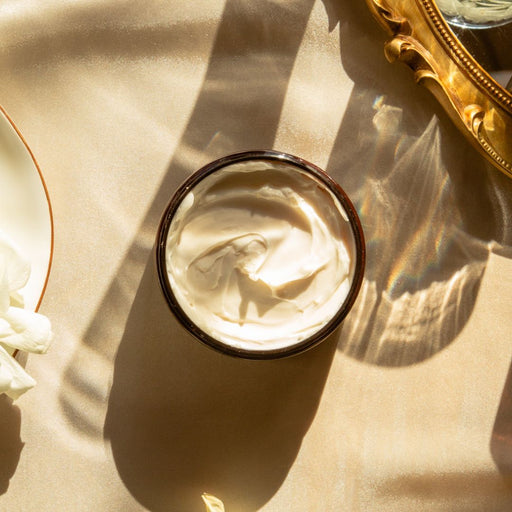Are you interested in using tamarind in your wellness routine? This tropical fruit is known for its cultural significance and tangy flavor, and is full of nutrients and vitamins that offer countless health benefits.
From savory stews and soups to traditional herbal remedies, this pod-like fruit can be incorporated into daily life with ease!
So, just how do you use this legume? Keep reading, and we'll share the history and significance of this fruit, as well as ways to use it in cuisine and skincare.
Key Takeaways
What Is Tamarind?
Tamarind is a small fruit that grows on a tamarind tree. These bean-pods are native to Asia and Africa, though they also grow in other tropical climates like the Middle East, Latin America, India, and Indonesia.
It's often referred to as the "date of India" because its sweet and tangy flavor is similar to that of dates.
Tamarind is used in cooking worldwide. It's often used in Indian, Thai, and Middle Eastern cooking and is a popular ingredient in stews, curries, soups, Pad Thai, candy, and tea.
It's also a key ingredient in Jamu, an ancient Indonesian wellness tradition that often involves herbal tonics made with turmeric, ginger, and palm sugar.
Bonus: Everything There Is To Know About Balinese Culture And Traditions
Is Tamarind a Fruit?
Yes! Tamarind is a fruit by botanical definition. Tamarind fruit contains seeds surrounded by a fibrous pulp and grows on a flowering plant.
However, tamarind is also a legume.
What Is Tamarind Paste?
The seeds in tamarind fruit are surrounded by a juicy pulp. This pulp can be used to make a paste.
Tamarind paste is highly concentrated and is a common way to store and use tamarind fruit, as it has a longer shelf life.
The paste has a dark color and is slightly sticky with a sour taste. Just add a small dollop to your dinner for a punch of flavor!
What Does Tamarind Taste Like?
Tamarind has a complex flavor profile that can be hard to define. Though it can have a slightly sweet flavor, its taste is often overly tarty and tangy.
This balance will often depend on how ripe the tamarind fruit is, as it gets sweeter the more ripe it is.
Some describe tamarind as tasting like a lemon or lime. Raw tamarind is highly acidic and has the tangy taste of citrus fruits. Tamarind also has smoky and caramel-y notes similar to that of molasses.
Is tamarind spicy? To some, tamarind has a slightly spicy flavor that pairs nicely with the sourness and sweetness of it.
All in all, the flavor profile of tamarind is hard to define. It's best to simply try it for yourself!
What Is a Good Substitute for Tamarind Paste?
It can be challenging to get your hands on fresh tamarinds. Luckily, it's easier to source tamarind paste, tamarind pulp, tamarind concentrate, or tamarind juice.
If you can't locate any tamarind product at all, there are some suitable substitutes.
The substitute you use will depend on your recipe. The most versatile and simple substitute is a mixture of lemon juice or lime juice and brown sugar. White wine vinegar mixed with brown sugar is also suitable.
What Is Tamarind Good For?
Tamarind is a nutrient-rich fruit that has many health benefits. It's high in antioxidants and is a great source of magnesium, calcium, and fiber.
Antioxidants are able to protect the body from free radicals. Free radicals are unstable cells that can lead to oxidative stress and cell damage. Tamarind is especially high in the antioxidant called beta-carotene, which supports eye health and brain function.
One serving of tamarind contains more than 25% of the recommended daily amount of magnesium. It also contains high amounts of potassium, iron, calcium, and phosphorus.
On top of that, tamarind is known for its anti-inflammatory properties. Tamarind contains flavonoids that help fight inflammation. That's one of the many reasons why tamarind is often used in skincare and wellness.
How to Use Tamarind
Skincare
Tamarind paste and fruit have been used in traditional medicine for centuries. The entire fruit, leaves, and pods of tamarind are often used in Jamu for healing and wellness.
It's also a great skincare ingredient, as it is able to smooth and hydrate the skin.
It's an active ingredient in our Triple Tea Antioxidant Essence (prev. Tamarind Tea Hydrating Toner), a lightweight and silky essence that visibly smooths, strengthens, and softens the skin. It contains tamarind seed extract to boost hydration and improve elasticity, helping to heal and deeply nourish the skin.
On top of that, it also contains rice bran extract for reducing redness, triple tea extracts for balancing pH, and hyaluronic acid for increased moisture.
Cooking
Tamarind paste or tamarind pulp is often used in Indian, Middle Eastern, and Thai cooking. You can eat tamarind raw or use it in savory dishes, desserts, and drinks.
Feel free to use it in any recipe where you want to add some citrus or tang!
Fun fact: Did you know that tamarind is also a key ingredient in Worcestershire sauce?
Final Thoughts
Tamarind is a versatile fruit that can add a subtle hint of sweetness and sourness to your favorite dishes. You can also use it in your skincare routine to smooth and hydrate your skin.
There's very little that this sour fruit can't do!
Keep Reading: 7 Anti-Inflammatory Herbs and Spices
--
Juara Skincare incorporates ancient rituals with Western skincare science, creating the ultimate beauty experience. We aim to transport you from the mundane to the extraordinary with our exotic ingredients, intoxicating scents, and powerful, skin-improving formulas. All of our products are nutrient-rich and botanically based. We are proud to be certified cruelty-free. Get the latest skin care tips and info on Juara products by following us on Twitter, Facebook, Instagram, LinkedIn, and Pinterest.














